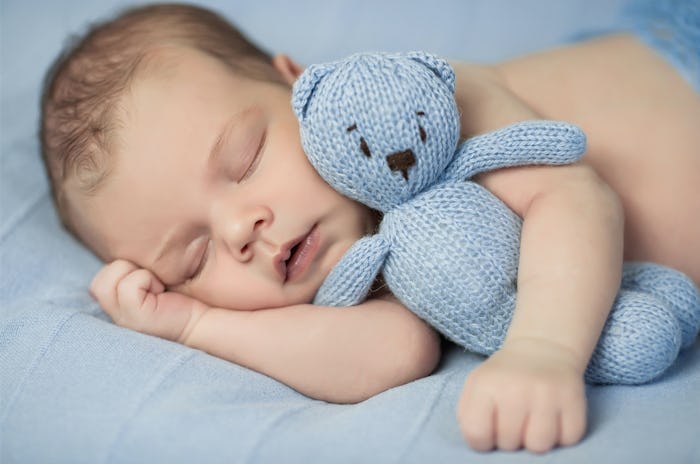Life

How To Get A Child To Take A Lovey, According To Experts
When my daughter was a newborn, I found this really sweet bunny lovey for her. It was the first non-clothing item my partner and I purchased for her so, selfishly, I wanted her to love it. Thankfully, it also became incredibly useful when we started a bedtime routine and began traveling as a new family of three. But how, exactly, can you get a child to take a lovey in the first place? Turns out, there are more than a few tips and tricks new parents can use to give their baby something to comfort them (while giving themselves, hopefully, a few extra hours of sleep).
How to get a child to take a lovey, in part, depends on your child and their age. According to the Baby Sleep Site, you shouldn't worry about offering a lovey during the newborn stage. Why? Well, your baby doesn’t have the ability to form an attachment to an object, so a lovey won’t necessarily matter. Plus, the American Academy of Pediatrics (AAP) recommends soft objects or loose bedding stay out of an infant's cribs. That includes pillows, blankets, and bumper pads, too. According to the Baby Sleep Site, some pediatricians say it's fine to introduce a lovey at four months, while others caution parents to wait until nine months, or even one year. Of course, if you're hesitant about providing your baby with a lovey, contact your health care provider to discuss your options and what's safe for your specific, unique baby.
If you're confused about what a lovey is, Sleepingbaby.com explains that it's just a cute word used to describe a transitional object that helps kids feel more calm when they're falling asleep or in a new environment. Some kids will attach to a blanket or stuffed animal, but a "true lovey" is something a baby or kid would be pretty sad to lose. That's why Sleepingbaby.com advises parents that it's a good idea to pick up a spare lovey before the inevitable happens and you, well, lose the original.
It's also possible that your child might not care very much about the lovey you selected for them, but will, instead, form a strong attachment to another inanimate object. In this case, the Baby Sleep Site recommends going with what helps your child self-soothe. According to the site, there have been more than a few, pretty hilarious lovey substitutes, including spoons, puzzle pieces, throw pillows, and board books. The key is to recognize the object that helps calm your child, and use that natural attachment to your advantage.
Obviously, when choosing a lovey for your child, you'll want something that's safe for him or her to lug around all the time. Sleepingbaby.com touches on this specific subject, reporting the following:
"Ideally you want something soft and comfy so you don’t have to monitor your child’s use all the time. It should be able to remain in bed with your child all night. It should not have small pieces that can separate or be removed. It should not have any hard edges."
The last thing you want is for your kid to become attached to something that could be potentially dangerous, so make sure to introduce objects that are safe and age appropriate.
When you introduce a lovey to your child, consider making sure your scent, or your partner's, is already on the lovey, making it all the more enticing to your baby. You can do this by making sure the lovey touches you when you're cuddling with it and your baby, or wearing the lovey around for a few hours before handing it over. Either way, having a familiar scent can help your baby attach to the object a little faster.
You can also make the lovey part of a bedtime routine from an early (but safe!) age, ensuring the object is in your baby's crib and making a point to say goodnight to the lovey, too. These small, but ultimately helpful, actions can help remind your baby that lovey is there, just in case.
Check out Romper's new video series, Romper's Doula Diaries:
Watch full episodes of Romper's Doula Diaries on Facebook Watch.